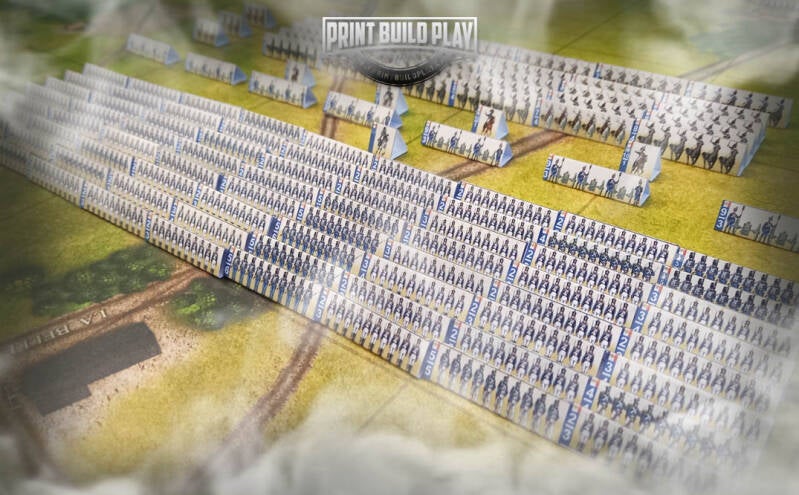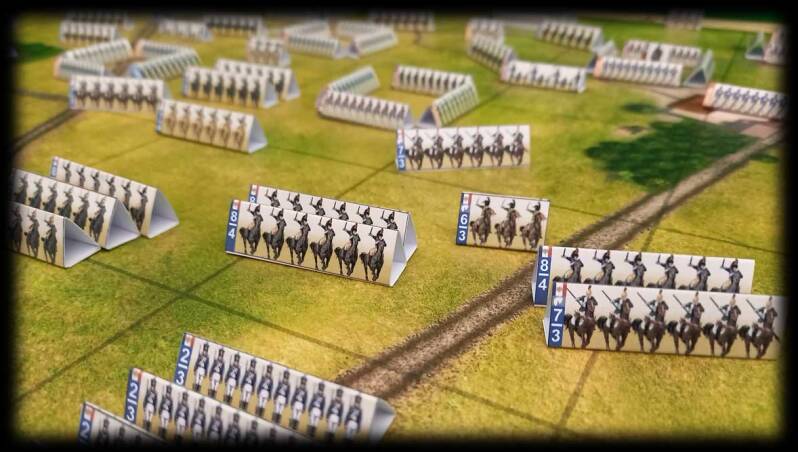The Napoleonic era was marked by numerous military advancements and strategic formations that revolutionized warfare. In particular, the Napoleonic infantry played a vital role in the success of Napoleon Bonaparte's conquests. Divided into three distinct classes, the light infantry, line infantry, and heavy infantry, each had a specific purpose on the battlefield.

The light infantry, also known as the "voltigeurs," were nimble and highly mobile units adept at skirmishing and harassing the enemy. They were typically armed with a musket, a bayonet, and a short sword, allowing them to engage in both ranged and close combat. Additionally, light infantry soldiers were trained in forming loose formations, such as the skirmish line, which allowed them to operate effectively in difficult terrains like forests and hilly regions. Contrasting the agility of the light infantry, the line infantry formed the backbone of the Napoleonic army. Also referred to as "fusiliers" or "foot soldiers," they were the most numerous and versatile infantry units. Line infantry consisted of soldiers armed with muskets and bayonets, marching in tight formations known as "platoons" or "lines." This formation facilitated disciplined volleys of gunfire against the enemy, creating devastation and chaos in their ranks. Moreover, line infantry was proficient in conducting organized charges to break enemy lines.
Apart from the light and line infantry, the Napoleonic army also included heavy infantry units, which consisted of grenadiers and the prestigious Guard infantry. Grenadiers were renowned for their exceptional strength, stature, and ferocity. They often wore tall, distinctive hats called "grenade caps," which became an emblematic symbol of their unit. Grenadiers were primarily tasked with assaulting fortifications, leading the charge, and inflicting devastating blows upon the enemy. On the other hand, the Guard infantry represented the elite soldiers, handpicked from the finest regiments in the army. Meticulously trained and equipped, they were the best of the best. Known as the "Old Guard" or "Grenadiers of the Guard," these troops were seen as the Emperor's personal bodyguards and were relied upon to carry out critical missions. Their impeccable discipline, unwavering loyalty, and combat prowess made them a formidable force on the battlefield.

While each infantry type had its specific role, the success of the Napoleonic infantry relied on their ability to work together in a unified manner. The light infantry would provide intelligence and operate on the flanks, disrupting enemy movements and causing confusion. The line infantry would form the core of the army, engaging the enemy in sustained firefights and charging when necessary. The heavy infantry, especially the Grenadiers and the Guard infantry, were reserved for crucial moments, where their presence and skills could turn the tide of battle. The Napoleonic infantry's success was not solely attributed to their training and organization, though. It was Napoleon's own tactical genius and ability to exploit the weaknesses of the enemy that added to their triumphs. The innovative use of combined arms, such as infantry working in conjunction with artillery and cavalry, further enhanced the effectiveness and versatility of the Napoleonic army.

In conclusion, the Napoleonic infantry can be classified into three distinct types: light infantry, line infantry, and heavy infantry. Each had a specific role on the battlefield, with the light infantry providing mobility and skirmishing capabilities, line infantry forming the core fighting units, and heavy infantry serving as the shock troops. Together, they formed a formidable force that played a significant role in Napoleon's military conquests. The legacy of the Napoleonic infantry continues to inspire military strategists and historians alike, as their tactics and formations shaped warfare for years to come.



Add comment
Comments